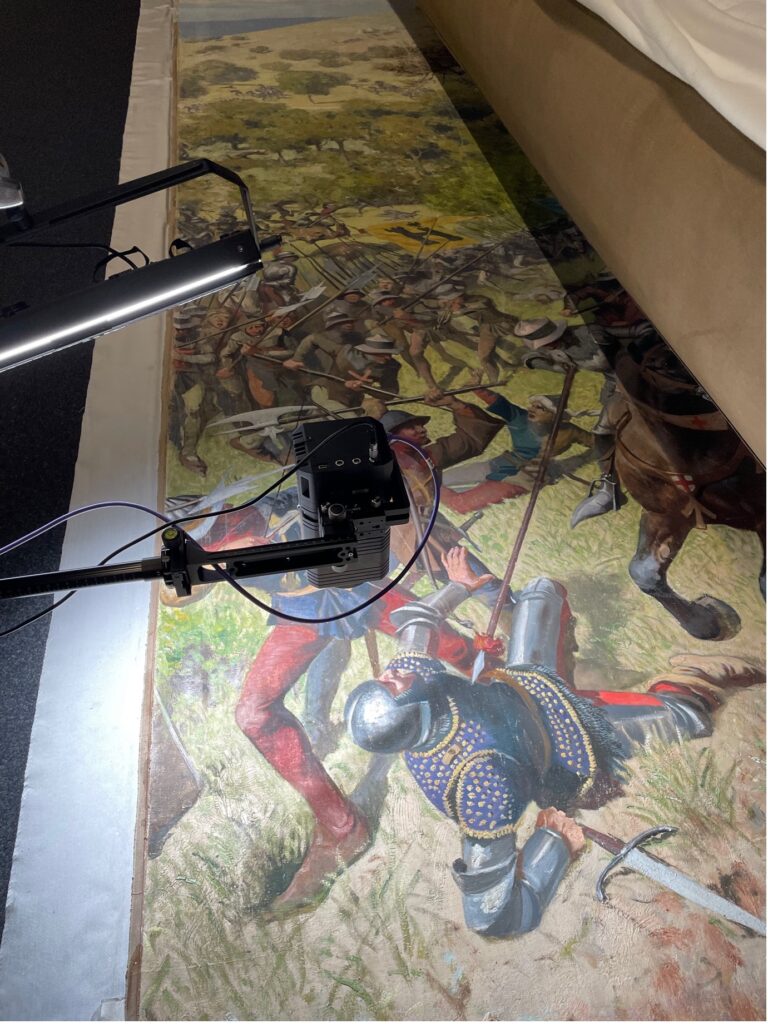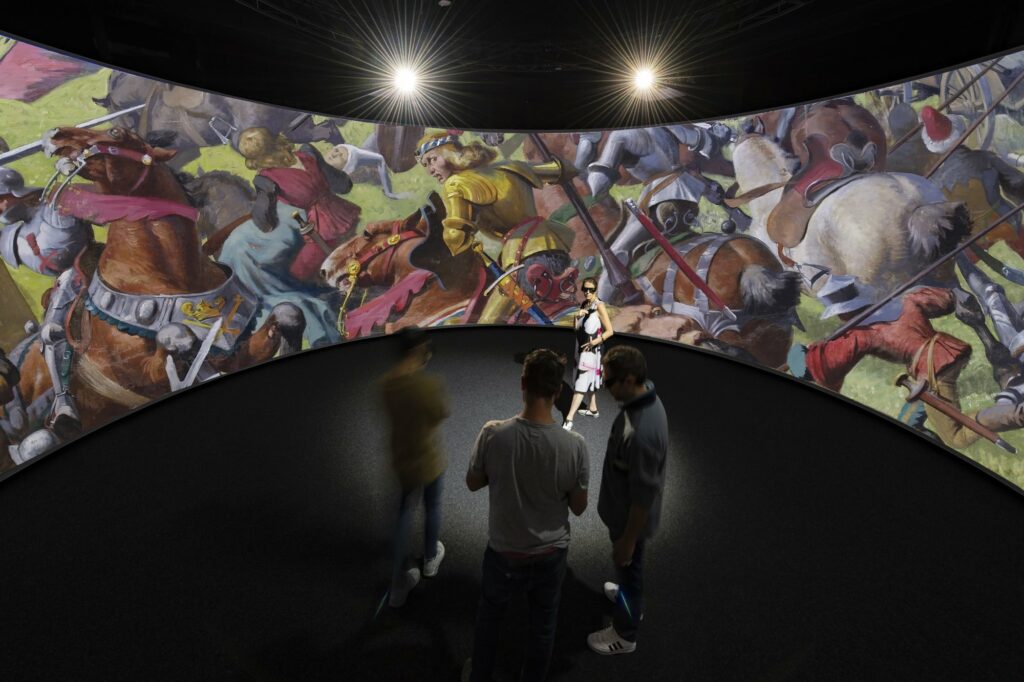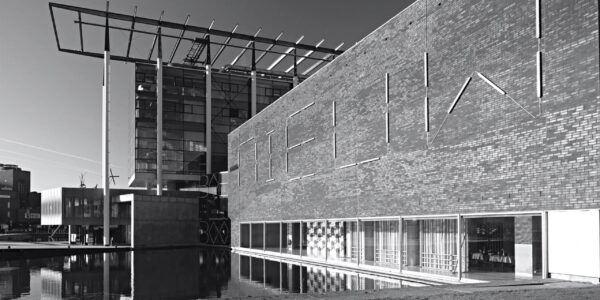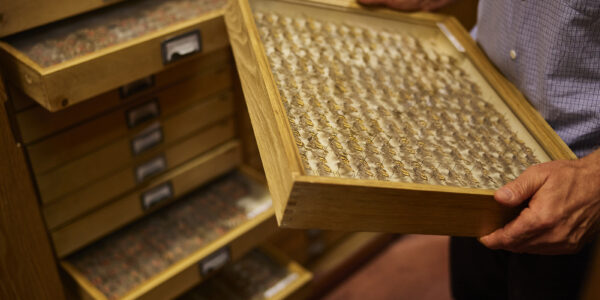When talking about large digitization projects, you do not only refer to the high-volume of images that could be processed, but also the large format of the digitized objects themselves. What larger painting to digitize than a panorama? Phase One joined the team at École Polytechnique Fédérale de Lausanne (EPFL) to support them in their preparation for digitizing the world known Murten panorama. Read about how they tested their digitization set-up for a 10m x 100m panorama painting.

There are estimated to be 15 large scale 19th century painted historic panoramas left in the world, of which 5 are in Switzerland. Some remain on public display; others are in storage and rarely seen.
These historically important artworks are usually displayed in ‘rotundas’ 360-degree theatres with raised viewing platforms, such as the one at Thun. The painting itself was produced in 1814 by the artist Marquard Wocher, the first Swiss work of its type and the world’s oldest example of the genre. It has been restaged in a modern -purpose-built rotunda.
© Sarah Kenderdine
Some have built models placed in front of the artwork to give a feeling of depth and three-diemsionality when seen from the viewing platform, like the Bourbaki panorama in Luzern, depicting the internment of 87,000 French soldiers who fled to Switzerland during the winter of 1871, painted by Edouard Castres in 1881.
The Murten panorama is one of those that is kept in storage, out of sight. Painted by the German artist Louis Braun in 1893, it depicts the Swiss Confederates’ 1476 victory over the Duke of Burgundy in Murten. Since being displayed in a rotunda theatre between 1894 and 1909, the painting has rarely been seen in public. Measuring some 10m x 100m, it was last seen at the Swiss National Exposition in 2002, but has otherwise remained rolled up, held on three huge spools, and carefully stored in a mountainous bunker in the Swiss alps.
Images below show sections of the Thun and Bourbaki panorama produced by © Prof. Sarah Kenderdine & © Paul Bourke




Now a team at EPFL, led by Professor Sarah Kenderdine, plan to bring the Murten panorama out from the dark and make it globally accessible by creating a high-resolution digital twin.
The aim of the project is to digitise the panorama at 1,000 ppi, creating a digital twin that can be accessed virtually from anywhere, as well as opening up the possibilities for interactive digital displays of the artwork, with long-lasting perspectives for its re-use. The eM+ and its team of digital and engineering specialists at EPFL are ready to face the technical challenges and deliver the image during 2023 in order to meet the 550th commemoration of the battle in 2026.
The challenge to creating archival quality images from image stitching is to ensure the panoramic image is as flat as possible. Using a high resolution iXH 150MP camera from Phase One, it is estimated some 26,000 images will be needed to create the final image at 1,000 ppi, producing a final image size of around 1.6 terapixels.
A custom-built truss will be made that will span the width of the artwork. The camera and lighting rig will be mounted onto the truss with a remotely triggered moveable section allowing the camera to take images in a series of vertical strips.
Phase One supported the team at EPFL, testing different techniques to establish the best way to capture the panorama in small sections, ensuring sufficient image resolution, sharpness and colour fidelity to enable the complex stitching of the individual elements into a single image file.
For these tests, the truss was still under construction, so testing was carried out with the cameras and lights mounted onto standard boom arms and carried on a heavy-duty pallet truck, manually pulled across the edge of the width of the artwork to achieve the three strips of images required for the test.

Tests were carried out using different lenses and light sources to ascertain the optimal camera set-up for the task, as well as figuring out how well the images can be stitched together to produce the final image. Test images of three columns of images across the width of the artwork were captured and examined for image quality, sharpness, resolution and ability to be stitched.
The ideal set-up was found to be the Phase One iXH 150MP camera with 72mm MK II lens, with a single light mounted to the side and cross-polarised to remove any unwanted reflections from the surface of the paint.
The team produced an even light calibration across the image area with the Capture One CH software, enabling the texture of the paintwork to be clearly seen in the high-resolution images. By using the Phase One D8 R+ LED light, they achieved a high-quality illumination across the capture area, producing perfect colours in the digital images.
Even with the inevitable movement of the boom arms as the pallet truck was moved to each position for capturing, all images remained pin sharp due to the extremely accurate focussing mechanism of the iXH camera and the camera’s industrial build.

With the images successfully stitched using PTGui software, the camera testing phase of the project is considered a total success. The imaging of the complete artwork is scheduled to commence in April 2023, following the conservation oversight of the painting, and will take approximately 3 months. Stay tuned to read about the final digitization project.
Pre-visualization of the Murten panorama in the 360-degree 3D system at the Laboratory for Experimental Museology, EPFL. © Prof. Sarah Kenderdine

Heritage
Recovering ancient Chinese records with multispectral imaging

Heritage
Norway’s National Library Increases Digitization Efficiency With Phase One iXH 150MP

Heritage
Revealing Lost Evidence of Ålesund’s Fire With Rainbow Multispectral Imaging

Heritage
Digitizing a Serbian Manuscript from the 12th century

Heritage
Modular digitization at the Herzogin Anna Amalia Bibliothek

Heritage
Goethe in Weimar’s digitization center

Heritage
University of Tartu Library

Heritage
Het Nieuwe Instituut (The New Institute) – Rotterdam, The Netherlands

Heritage
Digitizing the Lepidoptera collection at the Hungarian Natural History Museum

Heritage
Digitizing Dinosaurs and the Path to Virtual Exhibitions

Heritage
Getty Images Archive – Phase One iXG 100MP and Film scanning solution

Heritage
The Royal Library of Denmark

Heritage
The Fotothek of the Bibliotheca Hertziana

Heritage
Digital Aerial Photography Archive for Baden-Wuerttemberg

Heritage
Just in the nick of time: the story of an A0 at 300ppi test
